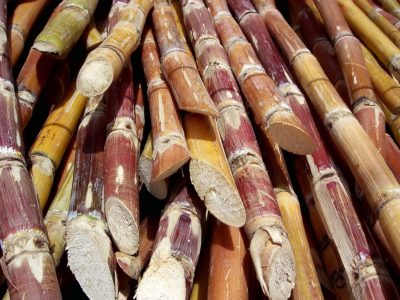Exactly How Walking Stick Sugar Handling Chemicals Improve Sugar Top Quality and Return
The duty of processing chemicals in walking stick sugar manufacturing is critical, as they straight affect both the quality and return of the last product. The consolidation of triggered carbon and enzymes serves to optimize the malfunction of complicated sugars, ultimately leading to a purer and higher-quality sugar.
Review of Cane Sugar Processing
Walking stick sugar processing involves a collection of critical actions that transform raw sugarcane into polished sugar items. The procedure begins with harvesting, where mature sugarcane stalks are reduced and transferred to refining facilities. Upon arrival, the walking cane undergoes cleaning to get rid of impurities such as soil and plant materials.
Adhering to cleaning, the walking stick is crushed to extract the juice, which contains sucrose - sugar and cane. This juice undergoes information, where lime and warm are utilized to remove remaining contaminations and non-sugar parts. The made clear juice is then evaporated to concentrate the sugar content, bring about the development of thick syrup
Following, the syrup is crystallized through a controlled air conditioning process, resulting in sugar crystals. To achieve polished sugar, more filtration steps are used, consisting of cleaning, re-crystallization, and drying out.
The end product is either packaged as raw sugar or further refined into white sugar, satisfying various customer and industrial requirements. This thorough collection of actions ensures the production of high-quality sugar, essential for numerous applications in food and beverage sectors.
Secret Processing Chemicals Utilized
The production of polished cane sugar counts on various processing chemicals that play significant functions at various phases. This action is vital for enhancing the overall high quality of the drawn out juice.
Phosphoric acid offers a dual purpose; it improves the information process and assists in the elimination of color-forming substances, adding to a greater purity of the final item. In addition, sulfur dioxide operates as a lightening agent, permitting the effective removal of undesirable pigments and enhancing the color of the sugar.
Other noteworthy chemicals consist of activated carbon, which is utilized for more decolorization, and enzymes that facilitate the failure of intricate sugars into simpler forms, thus boosting return. The mindful option and application of these processing chemicals are critical for enhancing the performance of sugar extraction and refining processes, inevitably leading to a much more constant and better sugar product.

Impact on Sugar Quality
Exactly how do handling chemicals influence the top quality of refined sugar? The intro of numerous chemicals in the walking stick sugar processing stage significantly improves the purity and overall high quality of the last product. Key representatives, such as phosphoric acid and calcium hydroxide, facilitate the explanation process, successfully getting rid of pollutants and colorants that can negatively this contact form influence sugar's appearance and taste. By reducing the effects of undesirable components, these chemicals assist achieve a higher degree of decolorization, resulting in a more aesthetically enticing and valuable item.
Furthermore, using activated carbon and ion-exchange materials during the refining procedure plays an important role in eliminating off-flavors and unfavorable odors, contributing to the sugar's sensory profile. This improvement not only elevates the visual and organoleptic qualities however also improves the rack life by lessening microbial task linked with pollutants.
In enhancement, the exact application of these chemicals makes certain that the sugar shows a consistent grain size and flowability, which are essential characteristics for both industrial applications and customer choices. In general, the tactical usage of handling chemicals is essential in achieving top quality refined sugar that meets market standards and consumer expectations.

Enhancing Yield Performance
Enhancing yield efficiency in cane sugar handling involves maximizing various phases of manufacturing to make best use of the quantity of sugar drawn out from raw cane. One important element is the choice and application of appropriate processing chemicals, which can promote the breakdown of cell wall surfaces and enhance sugar launch during removal. Chemicals such as acids and enzymes play an important function in this procedure by hydrolyzing polysaccharides and dissolving pollutants, consequently enhancing the total removal efficiency.

Routine surveillance and adjustment of handling criteria are crucial to preserve performance throughout manufacturing (sugar and cane). By using these techniques, sugar manufacturers can not only boost the amount of sugar acquired yet also lower waste and reduced production prices, adding to a much more lasting and successful sugar processing procedure
Advantages for Manufacturers and Consumers
Cane sugar handling chemicals provide substantial advantages for both manufacturers and consumers, creating a much more sustainable and efficient market. For manufacturers, these chemicals boost removal procedures, bring about greater returns and enhanced sugar quality. By maximizing the filtration and formation stages, they reduce waste and rise overall productivity, which can considerably decrease manufacturing costs. This performance enables producers to stay competitive in a worldwide market characterized by varying rates and need.
The improved quality of sugar translates to far better taste and uniformity in food products. Additionally, the usage of processing chemicals can lead to a more stable supply of sugar, alleviating shortages and cost spikes that can occur due to environmental aspects or market variations.
Final Thought

The role of handling chemicals in walking stick sugar manufacturing is pivotal, as they straight affect both the top quality and yield of the final item (sugar and cane). The consolidation of activated carbon and enzymes serves to enhance the malfunction of complex sugars, eventually leading to a purer and higher-quality use this link sugar.Walking stick sugar processing involves a series of important actions that change raw sugarcane right into polished sugar items.Enhancing return effectiveness in walking cane sugar handling entails maximizing numerous phases of production to maximize the quantity of sugar drawn out from raw cane.Cane sugar handling chemicals play an important function in improving both sugar top quality and yield